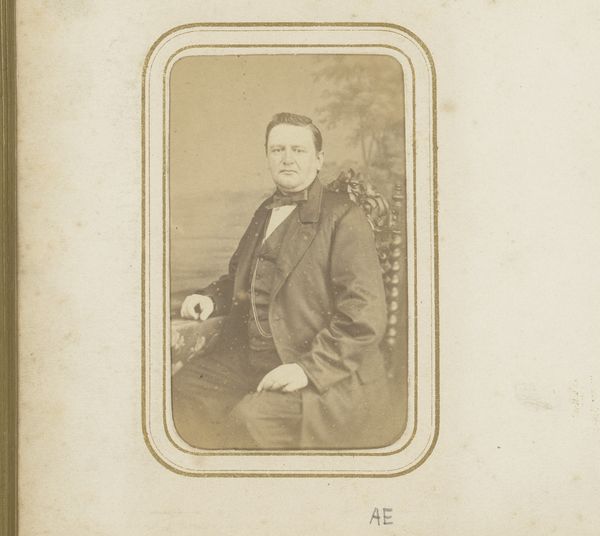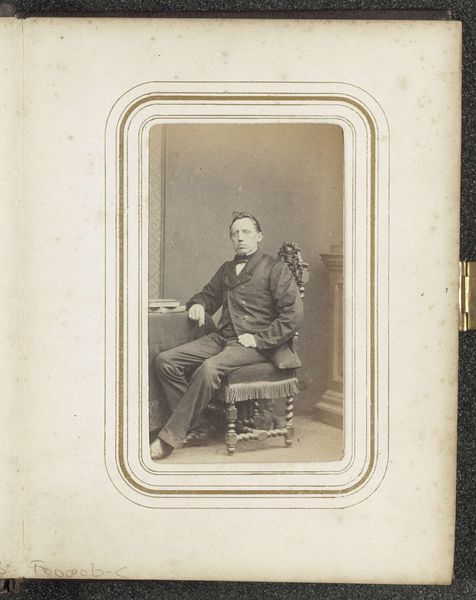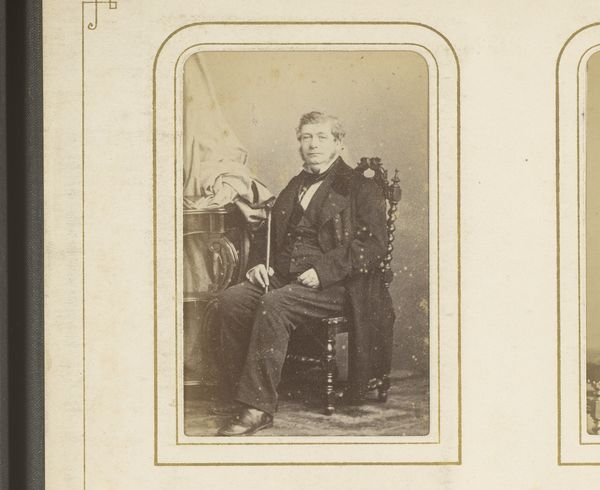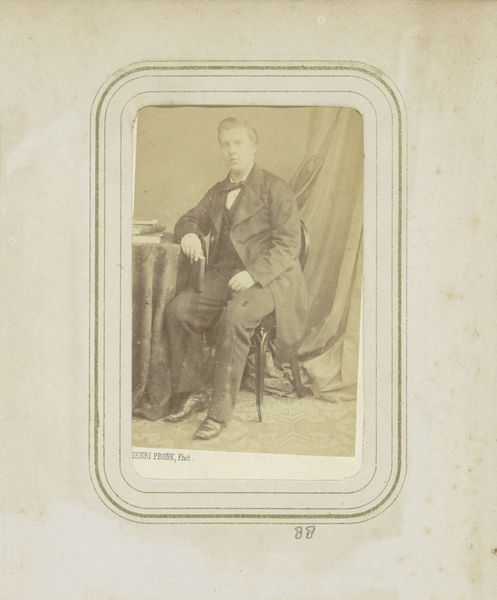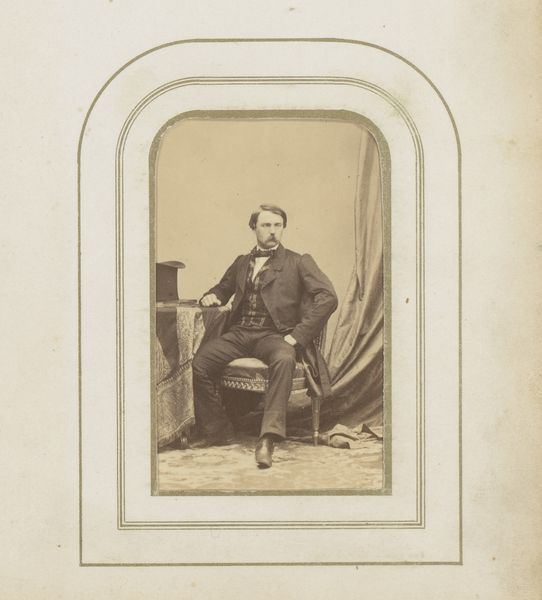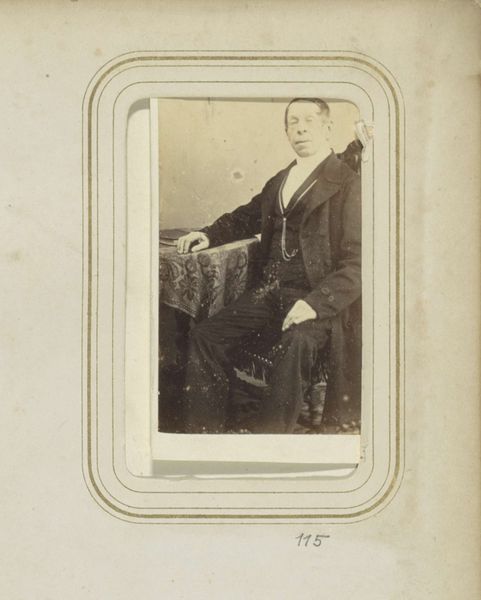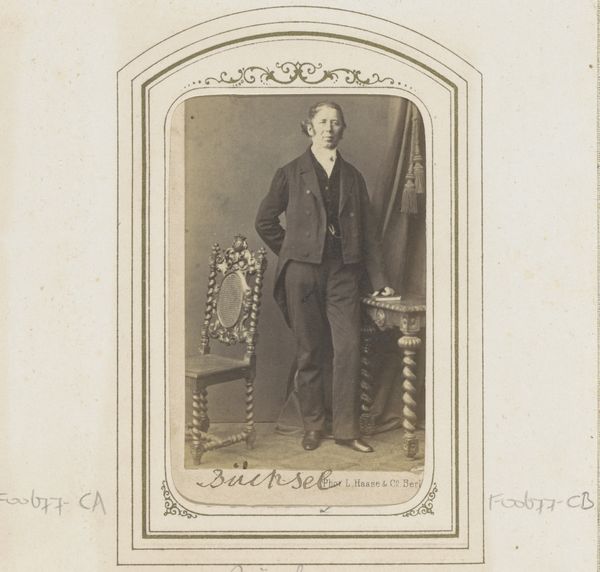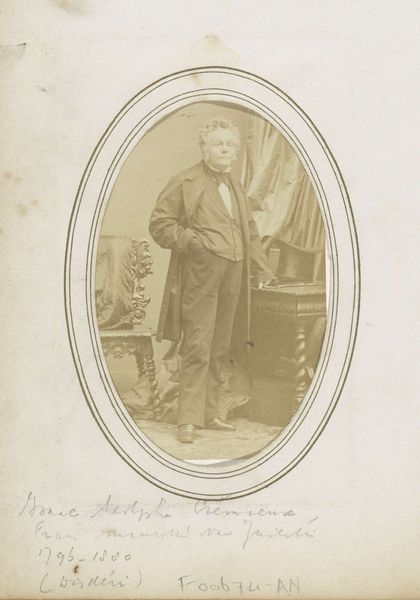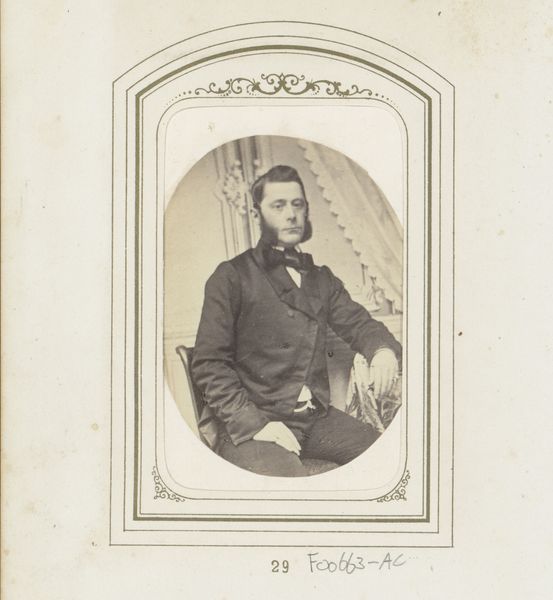
Portret van Sybrand Willem Hendrik Adriaan van Beyma thoe Kingma 1863 - 1883
0:00
0:00
mauritsverveer
Rijksmuseum
daguerreotype, photography
#
portrait
#
daguerreotype
#
photography
#
19th century
Dimensions: height 85 mm, width 53 mm
Copyright: Rijks Museum: Open Domain
Curator: This is a portrait of Sybrand Willem Hendrik Adriaan van Beyma thoe Kingma, a daguerreotype likely taken between 1863 and 1883, captured by Maurits Verveer. Editor: My first thought is how utterly serious the man appears! There's an imposing air about him. Curator: Daguerreotypes, early forms of photography, often rendered subjects with such gravity. Think of the technical demands—long exposure times meant subjects needed to remain still. But beyond that, consider the social implications of image-making at the time. Editor: True. And isn’t photography immediately tied to democratization by enabling anyone with the right access to make images? But also it codified new regimes for visibility, with photography like this used by powerful social groups and colonial institutions? Curator: Absolutely, consider the burgeoning middle class aspiring to the markers of status formerly restricted to the aristocracy. Photography provided that access, the chance to represent oneself and be registered within an official and social milieu. Editor: This photograph speaks volumes. There’s him, yes, seated and positioned—and also a story about class and its impact on identity and photographic representation at this historical juncture. I wonder if he was trying to send a specific message with this photograph. The stern look…the books at hand? Curator: I’d suggest that’s very likely. And to delve a little deeper into the material elements is very useful, also consider where such portraits were often displayed—in private residences or governmental offices, announcing position, power, social worth. Editor: All those considerations influence the very practice of looking at the image today. It makes you realize that viewing any photograph from the past requires more than simply looking. Curator: Precisely. The very act of portraiture, particularly photographic portraiture, is tied to historical context, a certain visual language, and ultimately, political motivations. Editor: That's changed how I initially perceived him. What seemed like a somber portrait now seems incredibly loaded. Thanks for pointing that out. Curator: Likewise, I always learn from how you perceive the social frameworks framing an object like this.
Comments
No comments
Be the first to comment and join the conversation on the ultimate creative platform.
